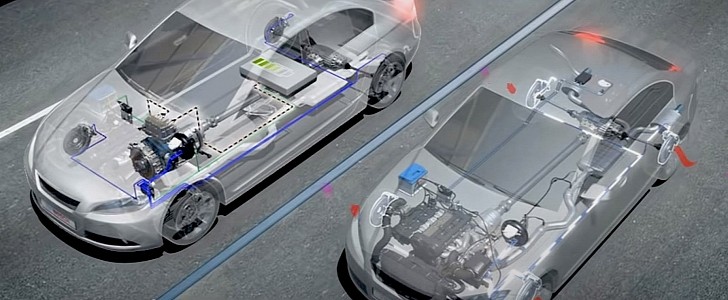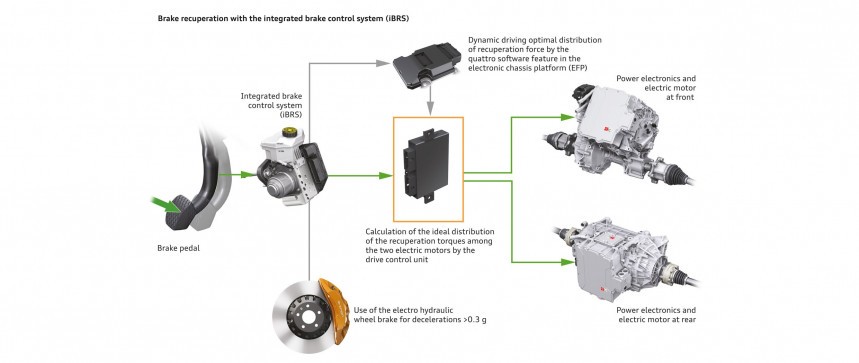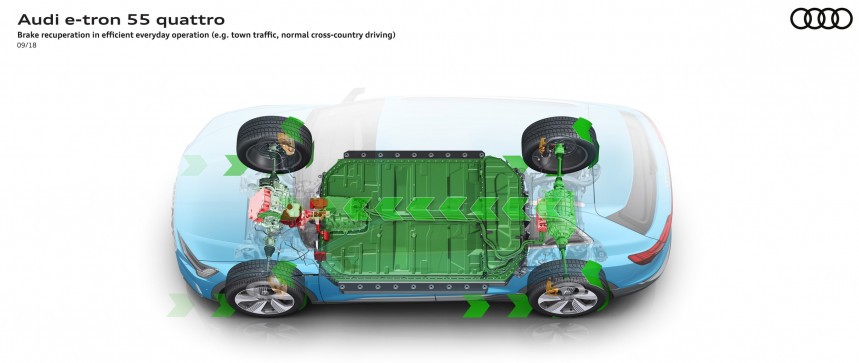Conventional car brakes are built with one thing in mind, the purpose of stopping the car. Since this purpose is essential, a great deal of time and resources were invested in the evolution of such systems.
Yet one thing seemed to be overlooked trough decades of groundbreaking advancements in effectiveness, performance, and safety. The potential to harvest that lost energy.
In 1967 the first concept car that used regenerative breaking, the AMC Amitron was unveiled in the U.S. Although it looked like a go-kart version of a Ford Pinto, it was way ahead of its time and the revolutionary braking system it introduced took another half of century to become common in the automotive industry.
The master cylinder incorporates a piston that depresses when the brake pedal is pressed, propelling the fluid trough the circuit and into the slave cylinders mounted at each wheel, which in turn push the pistons to effectively apply the brakes.
This system evolved through the years with innovations such as disc brakes, floating and multi-piston calipers or power brakes ,which make braking more effective and comfortable for the driver, especially with increased power outputs in today’s engines.
In cars from our era, fluid from the reservoir is delivered from the master cylinders, in tandem trough twin hydraulic circuits and directly to the caliper pistons to slow or stop the brake disc attached to the wheel hub.
Most modern cars also feature power assisted brakes. In these cases, a servo unit, in most case a vacuum pump, is placed between the master cylinder and the brake pedal, which effectively boosts the braking power when applying the brakes.
Basically, this system creates energy when braking by driving the electric motor in reverse when the driver pushes the brake pedal. This is achieved by using the vehicle’s own momentum and the gained energy is delivered and stored in the car’s battery unit.
In hybrid cars, this system works together with a conventional friction brake circuit that is engaged when the electric motor does not produce enough stopping power.
The hydraulic system is aided by the motor, which runs in reverse and produces electricity that feeds into the battery when the driver takes his foot of the pedal. The braking sequence does not only slow down the vehicle but turns the electric motor into a generator., thus creating energy.
Regenerative brakes work best in stop-and-go situations, where they can capture almost half of the energy lost due to friction. As a result, the battery charges and can be used for an extended interval and as a result, fuel consumption is significantly reduced.
We can conclude that the regenerative braking system is much more complex and, with its ability to produce electrical energy, it is the evolution of the conventional system. As the technology and materials become more accessible, it will eventually replace it on all our daily cars.
In 1967 the first concept car that used regenerative breaking, the AMC Amitron was unveiled in the U.S. Although it looked like a go-kart version of a Ford Pinto, it was way ahead of its time and the revolutionary braking system it introduced took another half of century to become common in the automotive industry.
Conventional Friction Brakes
An integral part of the traditional braking system is the hydraulics that drive it. It is composed of a main or master cylinder filled with fluid that is connected to a secondary, slave cylinder.The master cylinder incorporates a piston that depresses when the brake pedal is pressed, propelling the fluid trough the circuit and into the slave cylinders mounted at each wheel, which in turn push the pistons to effectively apply the brakes.
In cars from our era, fluid from the reservoir is delivered from the master cylinders, in tandem trough twin hydraulic circuits and directly to the caliper pistons to slow or stop the brake disc attached to the wheel hub.
Most modern cars also feature power assisted brakes. In these cases, a servo unit, in most case a vacuum pump, is placed between the master cylinder and the brake pedal, which effectively boosts the braking power when applying the brakes.
Regenerative Braking
The idea behind this system is not something new, as we pointed out in the beginning of this article. It is based on a simple principle. Harness as much of the lost energy and convert it into electric energy that can be stored in a high capacity battery.Basically, this system creates energy when braking by driving the electric motor in reverse when the driver pushes the brake pedal. This is achieved by using the vehicle’s own momentum and the gained energy is delivered and stored in the car’s battery unit.
In hybrid cars, this system works together with a conventional friction brake circuit that is engaged when the electric motor does not produce enough stopping power.
Regenerative brakes work best in stop-and-go situations, where they can capture almost half of the energy lost due to friction. As a result, the battery charges and can be used for an extended interval and as a result, fuel consumption is significantly reduced.
We can conclude that the regenerative braking system is much more complex and, with its ability to produce electrical energy, it is the evolution of the conventional system. As the technology and materials become more accessible, it will eventually replace it on all our daily cars.






